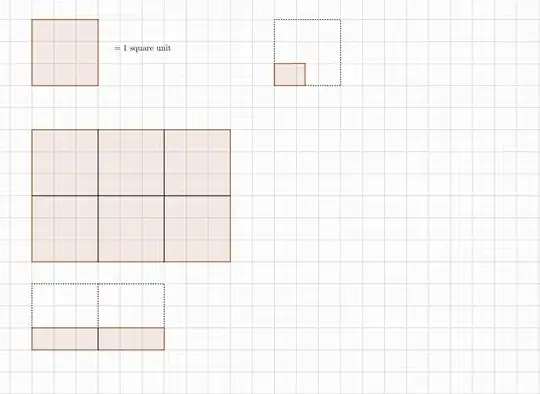I think you are confused by this fact;
How does multiplication correspond to area?
1: This is simple. When we multiply two numbers, $a$ and $b$, we can think of it as a rectangle with side $a$ and side $b$. This is because of the rectangle area formula $A = lb$ corresponds to direct multiplication. The important thing to note is that, at the standpoint of rectangles, $a \text{ units } \times b\text{ units } = c\text{ units}^2$. Remember that we are measuring the rectangle area in square units. This really means that the product of two values (sides) corresponds to a product (square units).
Theoretically, you could even do it with a parallelogram (if you know what it means). However, we use rectangles in most visualizations as it is simplest.
In the same way, multiplying a number by itself corresponds to the area of a shape with equal sides; a square. That’s why $x^2$ is the area of a square in square units.
This is my explanation for the distributive property geometric interpretation:

Here, we add a rectangle with area $a \times b$ with a rectangle with area $a \times c$ which I have explained in (1). Now, we can clearly see how this corresponds to adding the lengths and multiplying by the breadth.
From an algebraic standpoint, the only thing the distributive property really is is factoring out the $a$ in $ab + ac$.
The distributive property also works for any number of terms:
$a(b_1 + b_2 + \cdots + b_n) = ab_1 + ab_2 + \cdots + ab_n$
Hope this clears up confusion. If you have any more confusion, you can comment and I will edit this answer as per that.
I forgot to address fractions multiplication!
However, nothing changes with the area of a rectangle formula when you switch to fractions:
$A = lb$
And if you’d say $l$ and $b$ are fractions you would just get
$A = \frac{a}{b}\frac{c}{d}$
And, we know that multiplying fractions is just multiplying the numerators and denominators, so we get;
$A = \frac{ac}{bd}$
One of the most important things to note in Arithmeric and algebra is this:
Formulas don’t change when you plug in different things for the placeholders.
Hope this clears up confusion related to fraction multiplication.

